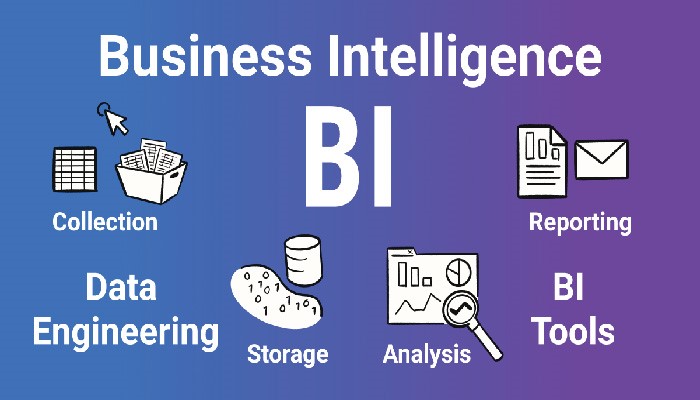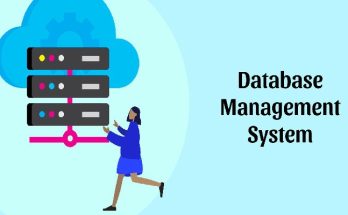Insights Unleashed: Harnessing the Power of BI and Advanced Reporting Tools
Are you ready to unlock the hidden potential of your business data? In today’s fast-paced digital world, harnessing the power of Business Intelligence BI and advanced reporting tools is crucial for staying ahead of the competition. Get ready to dive into the realm of BI and discover how these revolutionary tools can transform your organization’s decision-making process like never before!

The Benefits of BI and Advanced Reporting Tools
In today’s data-driven business landscape, the benefits of adopting Business Intelligence (BI) and advanced reporting tools are immense. These powerful tools allow organizations to transform raw data into actionable insights, enabling informed decision-making at every level.
One key benefit is enhanced visibility into business operations, as BI tools provide real-time analytics and customizable reports that offer a comprehensive view of performance metrics. This enables businesses to identify trends, patterns, and potential areas for improvement with precision.
Moreover, BI tools streamline the reporting process by automating manual tasks and reducing human error, saving valuable time and resources. Additionally, these tools empower users with self-service capabilities, allowing them to access relevant data independently without relying on IT support.
By harnessing the power of BI and advanced reporting tools, businesses can gain a competitive edge in their industry through improved operational efficiency and strategic planning based on data-driven insights.
Types of BI Tools
When it comes to Business Intelligence (BI) tools, the options are plentiful and diverse. One type of BI tool is self-service analytics platforms that empower users to create reports and dashboards without IT involvement. These tools allow for quick insights and decision-making.
Another category includes cloud-based BI tools, which offer flexibility and scalability by storing data on remote servers accessible from anywhere. They provide real-time data analysis capabilities.
On the other hand, predictive analytics tools use statistical algorithms and machine learning techniques to forecast future trends based on historical data patterns. These tools help businesses anticipate market changes and make proactive decisions.
Then there are embedded BI tools that integrate seamlessly into existing applications, allowing users to access insights directly within familiar interfaces like CRM systems or websites. This enhances user experience and increases efficiency in decision-making processes.
How to Choose the Right BI Tool for Your Business
When it comes to choosing the right Business Intelligence (BI) tool for your business, there are several factors to consider. First, assess your specific needs and goals – whether it’s data visualization, forecasting, or ad-hoc reporting.
Next, evaluate the scalability of the BI tool. Will it be able to grow with your business as you expand? Consider the user-friendliness of the interface – a tool that is intuitive and easy to navigate can improve adoption rates among employees.
Additionally, think about integration capabilities. Can the BI tool easily connect with your existing systems and databases? Compatibility is key to ensuring seamless data flow.
It’s also essential to look at pricing structures and licensing models. Determine what fits within your budget while still offering all the features you require.
Don’t forget about support services. A reliable vendor with excellent customer support can make all the difference when troubleshooting or seeking assistance during implementation and beyond.
Implementing BI in Your Organization
Implementing Business Intelligence (BI) in your organization can be a game-changer. It involves integrating data from various sources to help make informed decisions. The first step is assessing your business needs and goals to determine what insights you want to gain. Next, select the right BI tool that aligns with your objectives and budget.
Once you have chosen a BI tool, it’s crucial to ensure proper training for your team members on how to use it effectively. Data accuracy is paramount, so establish data governance policies and protocols for maintaining quality information. Collaborate across departments to gather diverse perspectives and leverage the full potential of BI.
Regularly monitor key performance indicators (KPIs) using dashboards and reports generated by the BI tool. Analyze trends, patterns, and outliers to identify opportunities or address challenges proactively. Continuous improvement is key – adapt strategies based on real-time insights gleaned from BI analytics.
Successful implementation of BI can lead to enhanced decision-making processes, increased operational efficiency, and a competitive edge in the market.
Best Practices for Utilizing BI and Advanced Reporting Tools
When it comes to utilizing Business Intelligence (BI) and advanced reporting tools, there are several best practices that can help maximize their potential. Ensure clear communication across teams about the goals and objectives of implementing these tools. This alignment is crucial for a successful BI strategy.
Regularly update and maintain your data sources to guarantee accuracy and relevance in your reports. Conducting regular audits can help identify any discrepancies or issues that need addressing promptly. Additionally, train your team members on how to effectively use the BI tools available to them.
Encourage a culture of data-driven decision-making within your organization by promoting the use of BI insights in day-to-day operations. Continuously monitor key performance indicators (KPIs) and adjust strategies as needed based on the findings from your BI reports.
Case Studies: Real-Life Examples of Successful BI Implementation
Discover how companies like Company X revolutionized their operations through BI implementation. By leveraging advanced reporting tools, they gained valuable insights into customer behavior, leading to targeted marketing strategies that significantly increased sales.
Company Y utilized BI to streamline their supply chain management, reducing costs and improving efficiency. Real-time data analysis allowed them to anticipate market demands and optimize inventory levels across multiple locations.
In the healthcare sector, Hospital Z used BI tools to enhance patient care by analyzing treatment outcomes and resource allocation. This resulted in improved patient satisfaction scores and reduced operational expenses.
Each case study showcases the transformative power of BI in driving informed decision-making and achieving tangible business results. These success stories serve as inspiration for organizations looking to harness the full potential of data-driven analytics in today’s competitive landscape.
Future Trends in BI and Advanced Reporting
The future of Business Intelligence (BI) and Advanced Reporting tools is constantly evolving to meet the demands of the ever-changing business landscape. One emerging trend is the integration of AI and machine learning algorithms into BI platforms, allowing for more accurate predictive analytics. This will enable businesses to anticipate trends and make data-driven decisions with greater precision.
Another key trend is the rise of augmented analytics, which leverages natural language processing and automation to simplify complex data analysis processes. This will empower users across all levels of an organization to access insights quickly and efficiently without requiring advanced technical skills.
Additionally, we can expect a shift towards real-time reporting capabilities, enabling businesses to react swiftly to changing market conditions. Cloud-based BI solutions are also gaining traction due to their scalability, flexibility, and cost-effectiveness.
As technology continues to advance at a rapid pace, it’s essential for businesses to stay abreast of these trends in order to remain competitive in today’s data-driven world.
Conclusion:
In today’s fast-paced business world, leveraging the power of Business Intelligence (BI) and advanced reporting tools is essential for staying competitive. The insights provided by BI tools can help organizations make informed decisions, optimize processes, and drive growth.
By harnessing the capabilities of BI tools, businesses can gain a deeper understanding of their data, identify trends and patterns, and uncover valuable insights that may have otherwise gone unnoticed. With the right BI tool in place, organizations can streamline operations, improve efficiency, and enhance overall performance.
As technology continues to advance rapidly, the future of BI and advanced reporting tools looks promising. With innovations such as artificial intelligence (AI), machine learning, and predictive analytics shaping the landscape of business intelligence, organizations will be able to extract even more value from their data in the years to come.
To thrive in today’s data-driven environment, businesses must embrace BI solutions that empower them to unlock actionable insights from their data. By choosing the right BI tool tailored to their specific needs and implementing best practices for utilization throughout their organization, companies can position themselves for success in a constantly evolving marketplace.
So take advantage of the power of BI and advanced reporting tools – unleash your organization’s full potential by making informed decisions based on actionable insights derived from your data. Embrace innovation, stay ahead of trends in technology advancements within this field; leverage these powerful tools to drive growth and achieve sustainable success for your business!



